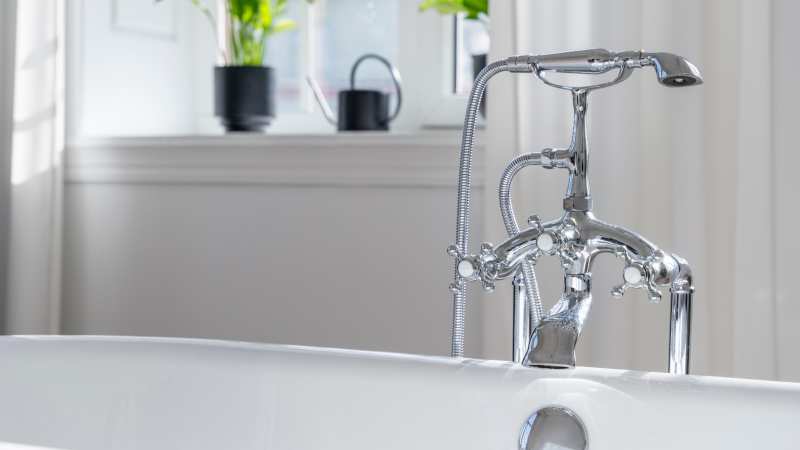Few things are more frustrating than stepping into the shower expecting a refreshing stream of water, only to be greeted by a weak dribble. Low water pressure can turn everyday tasks—washing dishes, doing laundry, watering the garden—into slow, annoying chores. While it may be tempting to blame the showerhead or faucet, the causes of low water pressure often run deeper. Understanding the root of the issue is the first step toward restoring a strong, consistent flow throughout your home.
What Is Water Pressure, Really?
Water pressure is the force that moves water through pipes and out of faucets. It’s measured in pounds per square inch (psi), with ideal home pressure ranging from 40 to 60 psi. When pressure drops below this range, you start to notice slower flow, sputtering faucets, or showers that never quite deliver that satisfying spray.
Low water pressure may affect the entire house or just one fixture. To pinpoint the cause, it’s helpful to understand the most common culprits.
1. Mineral Buildup and Sediment in Pipes
If you live in an area with hard water, minerals like calcium and magnesium gradually build up inside pipes. Over time, this accumulation narrows the interior diameter of the plumbing, making it harder for water to flow freely. The same thing can happen inside faucet aerators and showerheads, causing weak flow at individual fixtures.
How to Check:
Unscrew the aerator or showerhead and look for white, chalky buildup. If it’s present there, it may be inside your pipes too.
Fix:
Soak fixtures in vinegar to dissolve minerals. For pipe buildup, professional descaling or pipe replacement may be necessary.
2. Pressure Regulator Problems
Most homes have a pressure regulator, a valve that keeps incoming water pressure within safe limits. When this device fails, pressure may spike or drop significantly.
Signs of a faulty regulator:
- Low water pressure throughout the entire home
- Changes in pressure happen suddenly rather than gradually
Fix:
Testing or replacing a regulator is best left to a licensed plumber.
3. Partially Closed Shut-Off Valves
After plumbing repairs or renovations, shut-off valves may not be fully reopened. Even a slightly closed valve restricts flow, causing symptoms that mimic low water pressure.
There are two main shut-off valves to check:
- The valve where the main water line enters the home
- Valves underneath individual sinks and toilets
Fix:
Make sure they are turned fully open—typically, that means turning the handle counterclockwise.
4. Hidden Leaks in the Plumbing System
A leak doesn’t just waste water—it redirects it, reducing the amount reaching your faucets and showers. Even small leaks can significantly impact pressure, especially in older homes.
Signs of a leak include:
- Sudden drops in pressure
- Water stains, damp smells, mold, or unexplained wet spots
- A higher-than-normal water bill
Fix:
If you suspect a leak, shut off all water fixtures and check whether the water meter continues to run. If it does, you likely have a hidden leak and should call a professional immediately.
5. City Supply Issues
Sometimes, the problem has nothing to do with your home. Municipal water systems occasionally experience reduced pressure due to:
- High demand in your neighborhood
- Broken water mains
- Scheduled maintenance
Fix:
Contact your water provider to ask about supply issues. If neighbors are experiencing the same problem, the cause is external.
6. Aging or Corroded Pipes
Homes built more than 50 years ago often have galvanized steel pipes. Over time, these pipes corrode from the inside, leading to severe flow restrictions. Unlike mineral buildup, corrosion cannot be cleaned out.
Fix:
Replacing old pipes—typically with copper or PEX—is the most effective long-term fix. Although it requires an investment, updating outdated plumbing not only restores strong water flow but can also boost the value of your home. For the best results, consider hiring an experienced plumber in Murray, Utah, to ensure the job is done correctly and efficiently.
7. Multiple Fixtures Running at Once
Water pressure naturally drops when too many appliances are in use, especially in homes with older or smaller plumbing lines. Running the dishwasher, washing machine, and shower at the same time can overwhelm your system.
Fix:
Stagger water usage or upgrade to larger supply lines.
Maintaining Healthy Water Pressure
Regular maintenance helps prevent most pressure-related problems. Here’s what you can do:
- Clean faucet aerators and showerheads every few months
- Install a whole-house water softener if you have hard water
- Schedule periodic plumbing inspections
A consistent flow of water isn’t just about convenience—it’s also a sign of a healthy plumbing system.
In Closing
Whether it’s a clogged showerhead or aging pipes, low water pressure always has a cause, and in most cases, a solution. By understanding where the problem may start—mineral buildup, leaks, faulty valves, or even city supply issues—you can take the right steps to bring your home’s water pressure back to normal. Strong, steady water flow makes daily life easier, and with the right maintenance, you can enjoy it for years to come.

